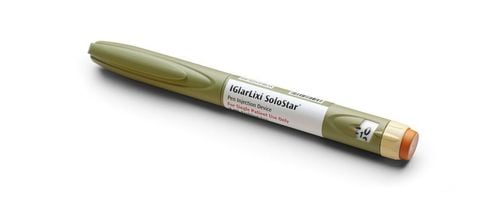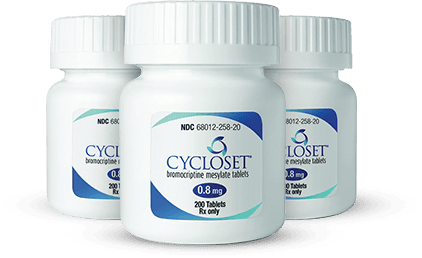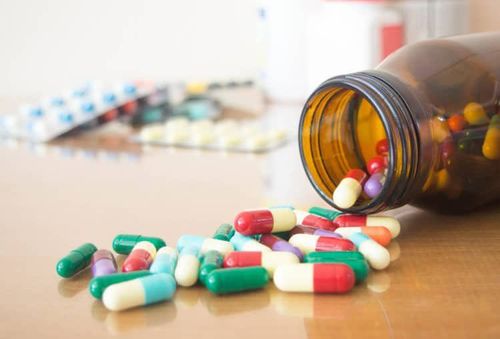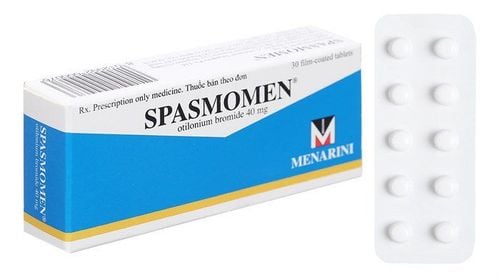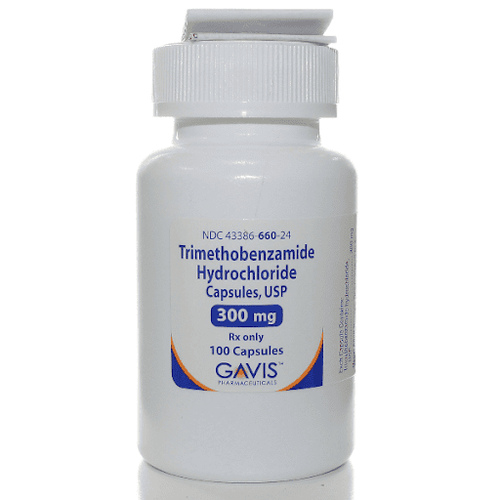This is an automatically translated article.
Eating mushrooms poisoning can happen when eating wild mushrooms growing in the garden or outside. Mushroom poisoning is very dangerous, when they can affect health, even lead to death. It is difficult to distinguish between edible and poisonous mushrooms, so it is best not to pick wild mushrooms to avoid eating poisoned mushrooms.
1. Symptoms of mushroom poisoning
1.1 Symptoms of mushroom poisoning appear early, common All types of poisonous mushrooms cause vomiting and abdominal pain, stomach cramps, depending on the type of fungus, the symptoms and degree of mushroom poisoning will be different. . Symptoms can appear as early as 2 hours after eating mushrooms or as late as 6 hours after eating mushrooms. Usually, early symptoms are less dangerous, including:
Gastrointestinal (little brown fungus, Chlorophyllum molybdites): inflammation of the intestines, stomach, may be accompanied by muscle pain, headache, bloody diarrhea ( sometime). Gastrointestinal symptoms usually resolve within 24 hours. Nervous (mainly hallucinogenic, aka hallucinogenic): symptoms of mushroom poisoning appear within 15-30 minutes including hallucinations, euphoria, increased heart rate, increased blood pressure, and increased blood pressure. blood oxygen (usually occurs in children). Muscarinic system (mushrooms of the genera Inocybe and Clitocybe): Sludge syndrome (common intoxication syndrome) with manifestations such as bradycardia, arrhythmia, spasticity, bronchial hypersecretion, wheezing, sweating foul. Symptoms usually appear within 30 minutes and resolve within 12 hours. 1.2 Late, severe symptoms of mushroom poisoning Fungi that cause delayed symptoms of poisoning include species of the genera Amanita, Gyromitra and Cortinarius. In particular, Amanita is the most poisonous mushroom, most cases of Amanita phalloides poisoning lead to death.
After 6 - 12 hours of consuming mushrooms, the toxin causes gastroenteritis with a more severe degree, possibly accompanied by hypoglycemia. After a few days, digestive symptoms eased and signs of liver or kidney failure began to appear.
Gyromitra mushrooms can cause hypoglycemia with or shortly after gastroenteritis. Other manifestations may include, CNS toxicity (convulsions) and, after a few days, hepatorenal syndrome begins to appear.
For Cortinarius fungi commonly found in Europe, gastroenteritis can persist for 3 days. Then, about 3 - 20 days, symptoms of kidney failure such as lower back pain and decreased urine output.

Ngộ độc nấm ảnh hưởng đến hệ thần kinh trung ương gây co giật
2. Diagnosis and treatment of mushroom poisoning
Usually, it is difficult to diagnose mushroom poisoning. The doctor mainly examines the patient, asks about the symptoms, the type of food eaten recently.
Therefore, if you suspect someone or yourself to have mushroom poisoning, contact your doctor immediately. If you show signs of convulsions, stop breathing, or lose consciousness, you need to go to the emergency room immediately and do not forget to bring the poisonous mushroom you have eaten.
If the sick person can vomit, the most dangerous situation can be reduced. Therefore, when having an emergency, the first thing the doctor will do is give the person with mushroom poisoning activated charcoal to induce vomiting. Your doctor will then check your temperature, heart rate, and blood pressure, and monitor you closely for serious symptoms and complications.
If there are no symptoms of severe poisoning and the fungus is confirmed to be harmless, the patient can be sent home and monitored for the next 24 hours to identify other possible symptoms of poisoning. happen or not.
2.1 Treatment of mild mushroom poisoning With early symptoms of mycosis and usually low risk, treatment is as follows:
Gastrointestinal: supportive symptomatic treatment. Neurological: treat with sedatives (eg, benzodiazepines) Muscarinic system: treat symptoms such as wheezing, bradycardia with atropine. 2.2 Treatment of severe mushroom poisoning With late symptoms of mushroom poisoning and endangering health and life, the treatment will be stricter, specifically:
Monitor hypoglycemia Use repeat doses Activated charcoal Treatment of kidney failure with dialysis Treatment of liver failure can be by liver transplantation, either medication or aggressive treatment Neurological therapy with slow intravenous infusion of pyridoxine 70 mg/kg over 4-6 hours ( up to 5g/day)

Người bệnh ngộ độc nấm cần được điều trị tích cực theo phác đồ
3. Symptoms of mushroom poisoning recurrence and prevention of eating poisoned mushrooms
Mushroom poisoning can have unpleasant short-term health effects, such as recurrent vomiting and diarrhea. If the poisoning is severe, it will take longer for the patient to recover, but it is also possible that the damage is permanent.
In nature, it is difficult to distinguish edible mushrooms from Vietnamese poisonous mushrooms. Folklore rules are often unreliable and depending on the location and time of harvest, the toxicity of the same mushroom can vary.
If mushroom poisoning is caused by ingesting mushrooms of unknown origin, it is important to identify the fungus in order to seek specific treatment. Therefore, the best way to avoid ingesting poisonous mushrooms is not to pick wild mushrooms.
Poisonous and edible mushrooms can grow side by side and we can't tell them apart. In particular, the fungi that grow in the ground are often more dangerous than those that grow on trees, mushrooms that grow in the forest are more dangerous than those that grow on grass. And cooking poisonous mushrooms does not remove the poison in mushrooms. If you want to eat mushrooms, it is best to buy mushrooms from reputable food stores, supermarkets.
For more information about nutrition knowledge, safe food, health information... you can visit the website of Vinmec International General Hospital.
Please dial HOTLINE for more information or register for an appointment HERE. Download MyVinmec app to make appointments faster and to manage your bookings easily.
Reference source: msdmanuals.com - familydoctor.org



